Eastern Crete has dozens of enchanting and unknown destinations that "capture" every visitor, making him…
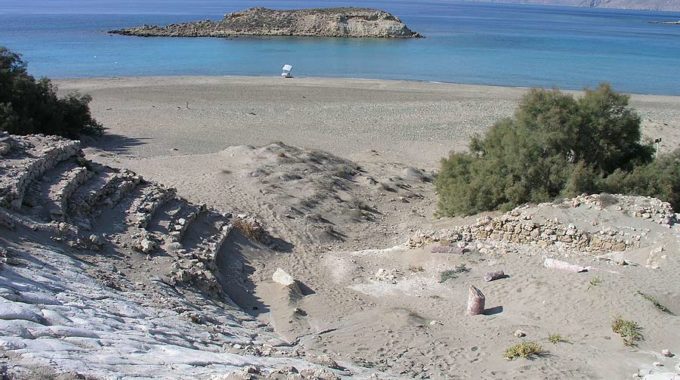
Koufonisi island or Lefki
This is a small island in the Libyan Sea off the south-eastern coast of Crete, or more eχactly, south-east of the Goudouras village promontory near Makrigialos. Together with the islets of Makroulo, Strongilo, Trachila and Marmara it forms a close group.
Deserted and in many parts covered by a thick layer of sand it is reminiscent of an African desert. Elsewhere the island is covered by low scrubby vegetation; almost the only trees being the few tamarisks near the shore. Α grazing place for sheep and goats until 1976 it could, 30 years ago, be rented from the state by anyone who wanted to cultivate it, the soil at that time being especially good for the production of wheat. There is no written information about any proper settlement on the island for at least the last millennium and yet the archaeologist’s spade has proved that under the silent surface of the deserted isle a whole colony lay buried. There is a passage in Pliny the Younger (Book IV 12 (61) describing the island of Leuce «which is in the region of the sea opposite the cape of Itanos».
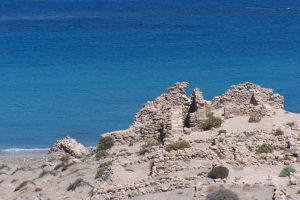
The identification of this island with Koufonisi was not only absolutely certain but it also engendered historical responsibilities for the relevant scholars, because the famous inscription of the Arbitration of the Magnesians tells us about Lefki at considerable length. The inscription, which is now set into the facade of the monastery church at Toplou, is about the border disputes between Itanos and Hierapytna. One of the main bones of contention was Hierapytna’s claim on the island of Lefki. This arbitration took place in 132 BC and the Magnesian court awarded the island to Itanos, regarding it as hers by inherited right.
Lefki was an important centre for sponge fishing and for the preparation of purple dye from the famous gastropod Murex Trunculus which, according to Aristotle and Pliny the Elder, was gathered at the beginning of autumn or winter and kept alive in basket-work containers until a huge quantity had been collected, as each shell only produced a single drop of dye. Το extract the dye the smaller shells were crushed with stones; the larger ones were pierced and a tiny gland (known as the anthos or flower) was removed from the neck of the mollusc. The milky fluid from this was put into brine, a little vinegar was added and it was left in the sun where the colour gradually changed from yellowish to a deep purplish red. It was then either diluted or concentrated further by boiling it down. In those days this purple dye was sold for its own weight in silver. The addition of hyancinth flowers rendered the colour more of a violet mauve but this was regarded as being of inferior quality. In addition to her importance as a source of revenue for the mother city, Lefki also played an important military role for the protection of the state by checking shipping as it approached the south-eastern shores. In the middle of last century the Englishman Captain ΤΑ.Β. Spratt, always in search of antiquities, visited Koufonisi and reported that he had seen ruins. These he described fairly accurately as a temple to the south with pieces of a marble statue, a settlement to the north and cisterns for water in about the centre of the island.
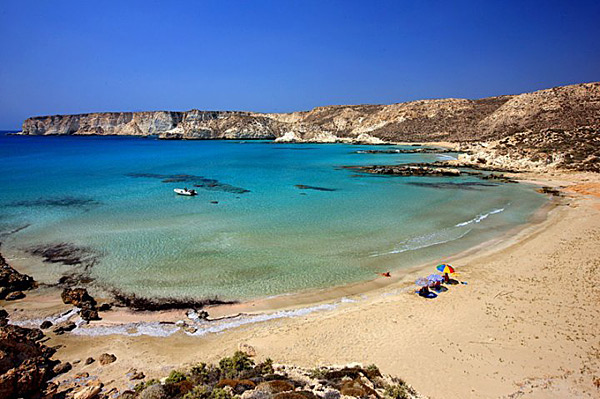
In 1903 the English archaeologists R.C. Bosanquet and C.T Currely went over to the island one afternoon and made a hasty inspection of what Spratt had described. Much more recently, in 1971 the American archaeologist Albert Leonard Jnr visited the island and made a more careful examination of what was visible on the surface, but without the use of pick and spade nothing was more than conjecture. Thus in 1976 systematic excavations were started by the Ephorate of Classica Antiquities of Eastern Crete under the direction of the present writer. They have been continued each season with astounding results.
The first two years were devoted to uncovering a reasonably well preserved stone-built theatre near the north-west shor of the island opposite the Iittle island of Marmara. Only the west side of the auditorium is ruined although a big section of the seating in the centre has been completely destroyed. The theatron or auditorium consists of twelve rows of seats and measures 34m at its widest point. The distance between the floor of the orchestra and the twelfth row of seatingis about 6m. It is estimated that the auditorium would have held about a thousand people.
The orchestra is semi-circular and was covered with ceramic tiles. The west side of the skene or stage building is totaIly destroyed now, but the whole must have been about 20m long by 9m deep. At the eastern end one can make out the paraskenion, the pulpitum or stage, the hyposkenion and also the east parados which was vaulted. The original rich decoration of the theatre has been vandalised. The theatre was deliberately smashed and burned down at the end of the 4th century ΑD.
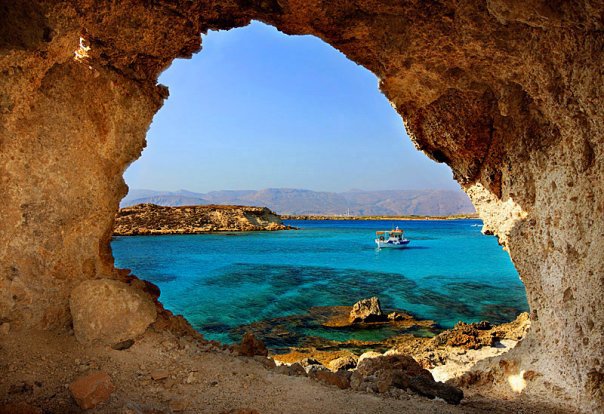 The settlement seems to be bigger than was at first reckoned, spreading southwards and even more so to the east of the theatre. Excavatibns have unearthed a large house or villa of which 8 proper rooms still exist. One enters through a small but impressive porch (propylon) facing the road which leads to the east parados of the theatre. The kitchens were identified and also the household workshop for the preparation of purple dye. Two formal rooms for entertaining were found with mosaic floors of black and white geometrical designs (based on the rhombus and the cross) framed by a surround.
The settlement seems to be bigger than was at first reckoned, spreading southwards and even more so to the east of the theatre. Excavatibns have unearthed a large house or villa of which 8 proper rooms still exist. One enters through a small but impressive porch (propylon) facing the road which leads to the east parados of the theatre. The kitchens were identified and also the household workshop for the preparation of purple dye. Two formal rooms for entertaining were found with mosaic floors of black and white geometrical designs (based on the rhombus and the cross) framed by a surround.
In the main part of the settlement other houses have been excavated; 16 rooms have been cleared – probably houses of fishermen, because installations for the preparation of purple dye were found and also fishing equipment such as hooks and lead weights for nets. Εχcavation in the area continues. Finally, the temple mentioned by Spratt at the south of the island has also been examined. Its overall dimensions are 18,00 χ 15,70m with a crepidoma. Sadly it has been completely spoiled, the stones having been taken in about 1920 to construct a massive building – lighthouse only 5m from the eastern short side of thetemple where the entrance wouId have been, even though another stepped entrance was found on the north side.
Next to the north-west corner two large pieces of the colossal cult statue of the temple seen by Spratt were found. This represented a deity enthroned on a cube-shaped seat. The fragments found are: 1) a part of the seat with the left side of the pelvis, and 2) the right leg from the draped or folded waist of the garment down to the ankIe. Unfortunately it is very damaged, but it appears to be of the Hellenistic period and the height of the whole statue must have been over 2,50m. Visitors to the island, mainIy saiIors, have scratched names and dates onto the surfaces; one of the dates discernable is 1630.
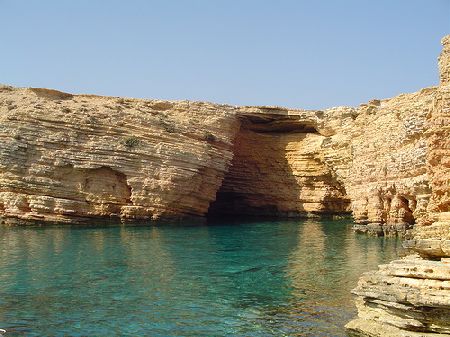 The rest of the statue, however incredible it may seem, must have been broken up by the workmen and used as building material for the lighthouse (which was bombed in 1944). Here the lumps of marble can be seen wedged among the other stones, also the huge symmetrical blocks which were uprooted from the temple of which only the steps and the filling remain – even the flooring has disappeared.
The rest of the statue, however incredible it may seem, must have been broken up by the workmen and used as building material for the lighthouse (which was bombed in 1944). Here the lumps of marble can be seen wedged among the other stones, also the huge symmetrical blocks which were uprooted from the temple of which only the steps and the filling remain – even the flooring has disappeared.
As if all this were not enough, in more recent years, a metal automatic lighthouse pylon (now removed) had been set up over the fIoor of the temple, placed perhaps, who knows, by the ironical hand of fate right where the colossal statue of the deity, worshipped by the peopIe of Lefki, used to stand in all its splendour.
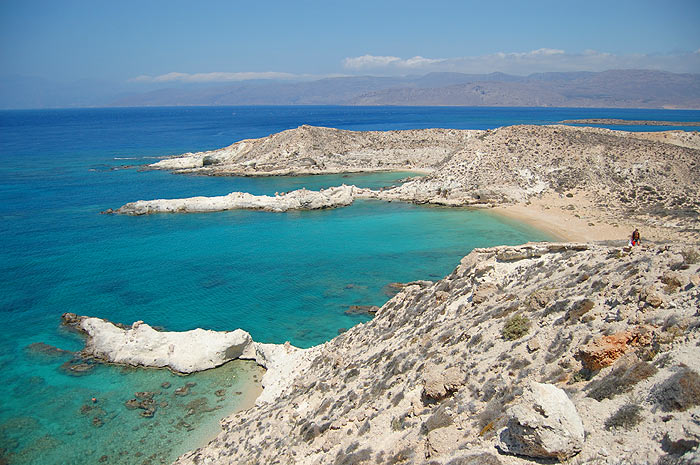
There are ruins all over the island, variously datable from the Εarely Μinoan years right through to the Post-Byzantine era when some caves on the western shore were in use as chapels, with carvings of saints and rough Latin inscriptions of which one includes the date 1638 After the settlement was destroyed (it is not known how) round the 4th century AD, it was never reestablished, and this fact combined with the great extent of the ruins should provide opportunities for study and archaeological research over a long period. Because of its importance in the field of archaeology, and considering its relative proportions, it would not be inappropriate to designate it «a little Dilos».
From the book “Sitia”, N. Papadakis, Archaeologist
Additional Info
Location: Makrigialos-Goudouras Region – 8 km south from Goudouras village
Area: 5,25 km² Max length:6 km and 5.5 km across
Access: Boat from Makrigialos
Residents: 0
Highest point: 82m
Koufonisi island or Lefki Gallery
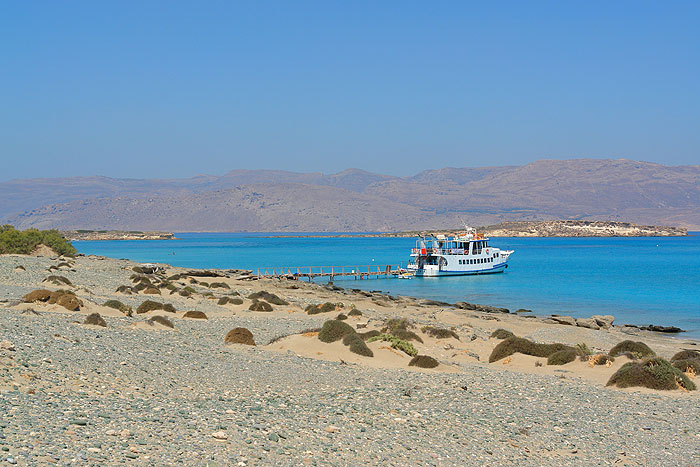
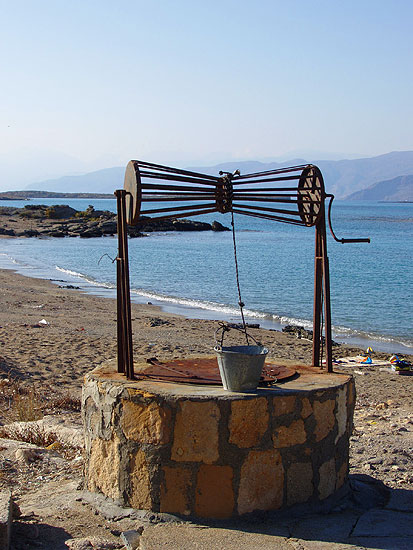
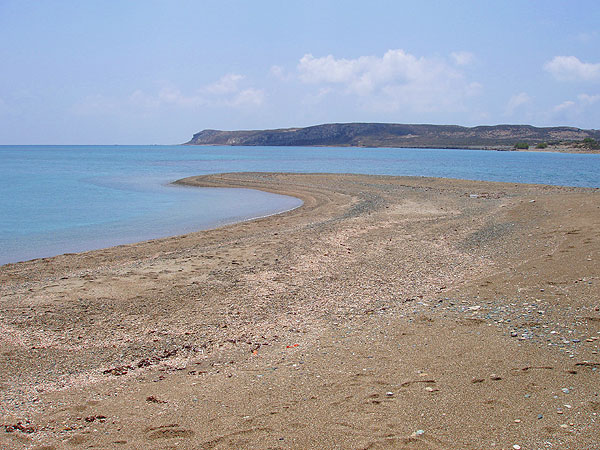
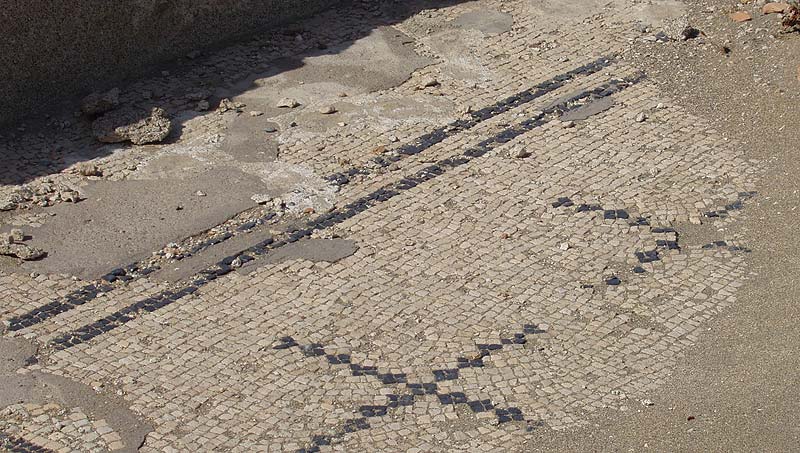
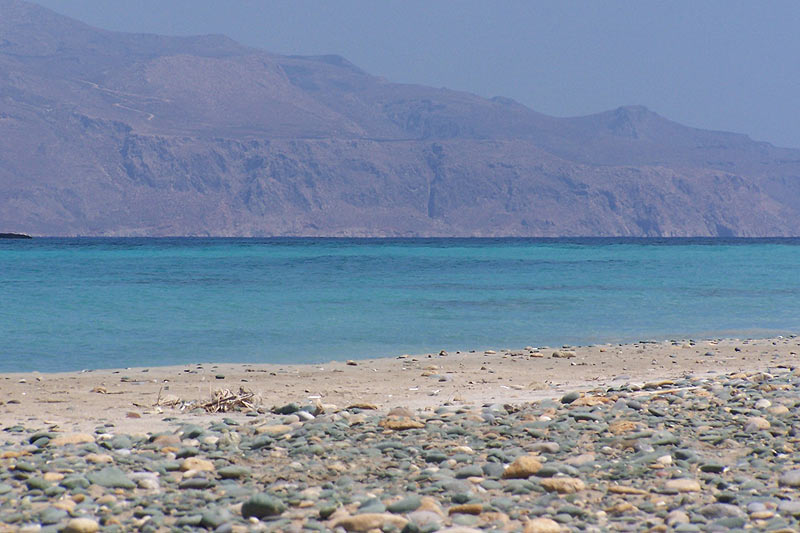
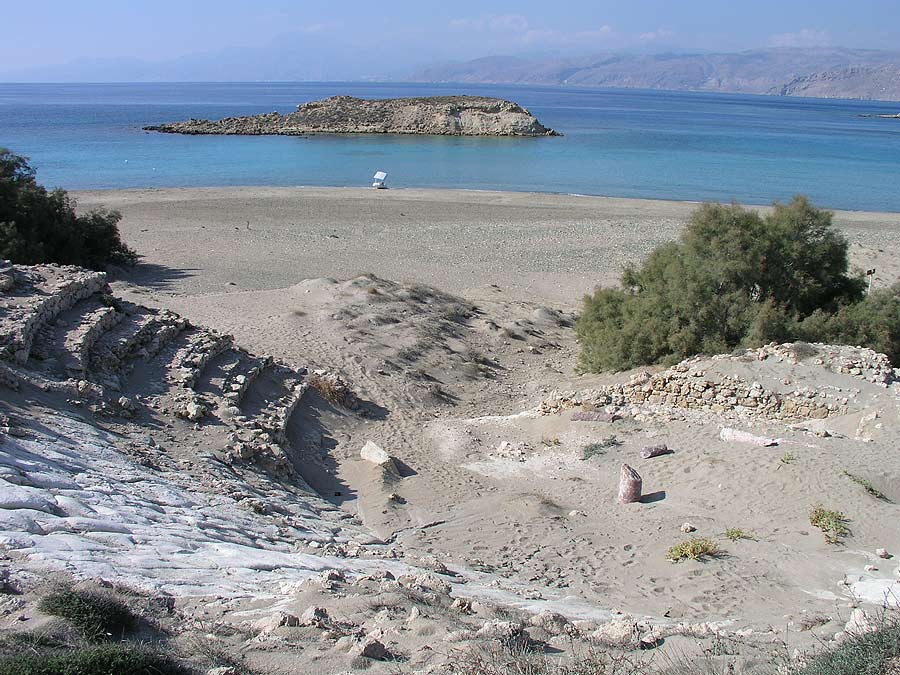
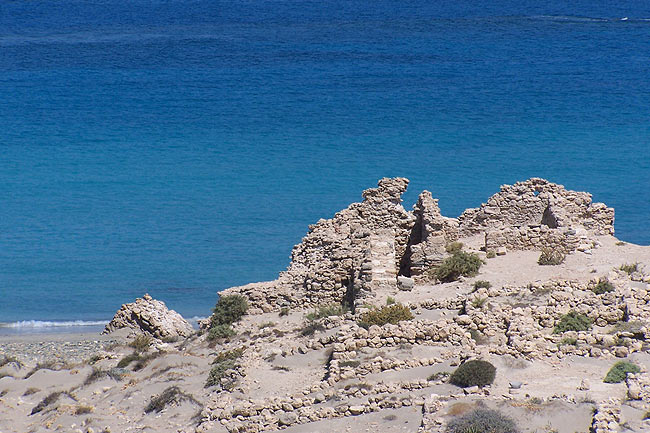
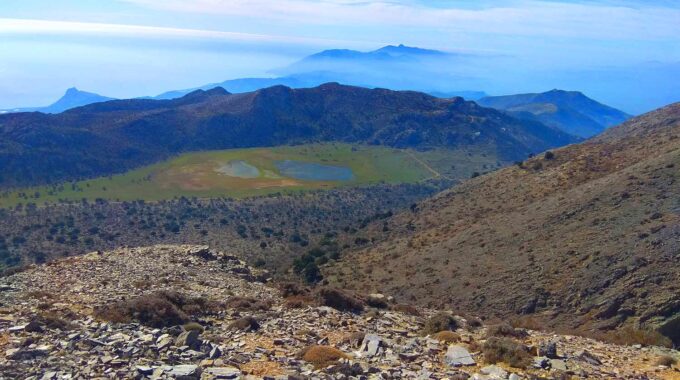
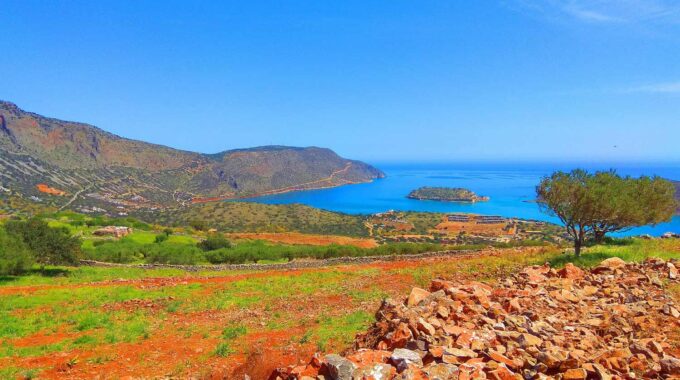
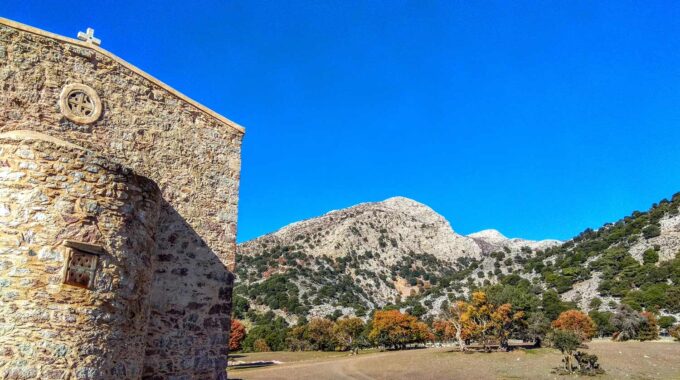
This Post Has 0 Comments